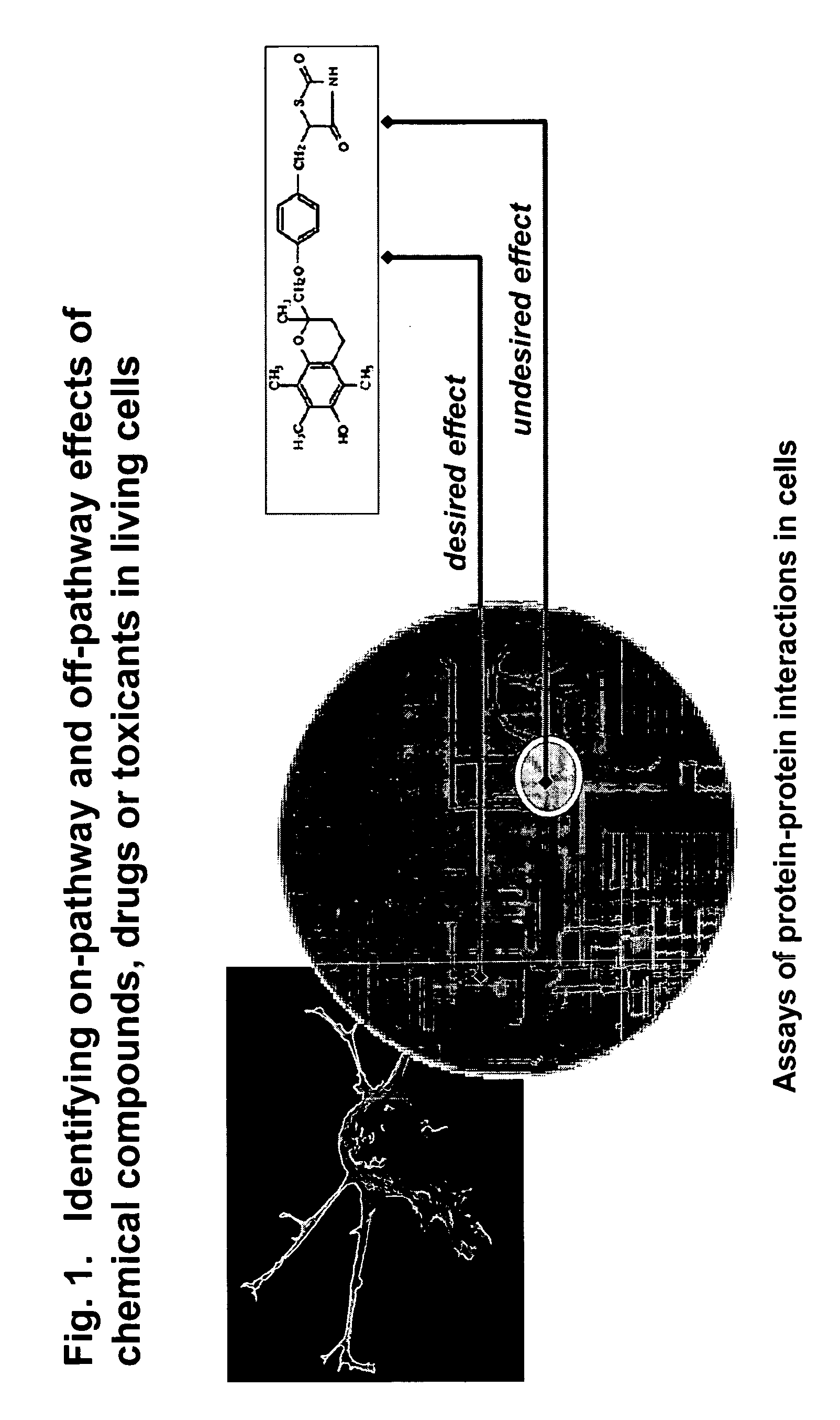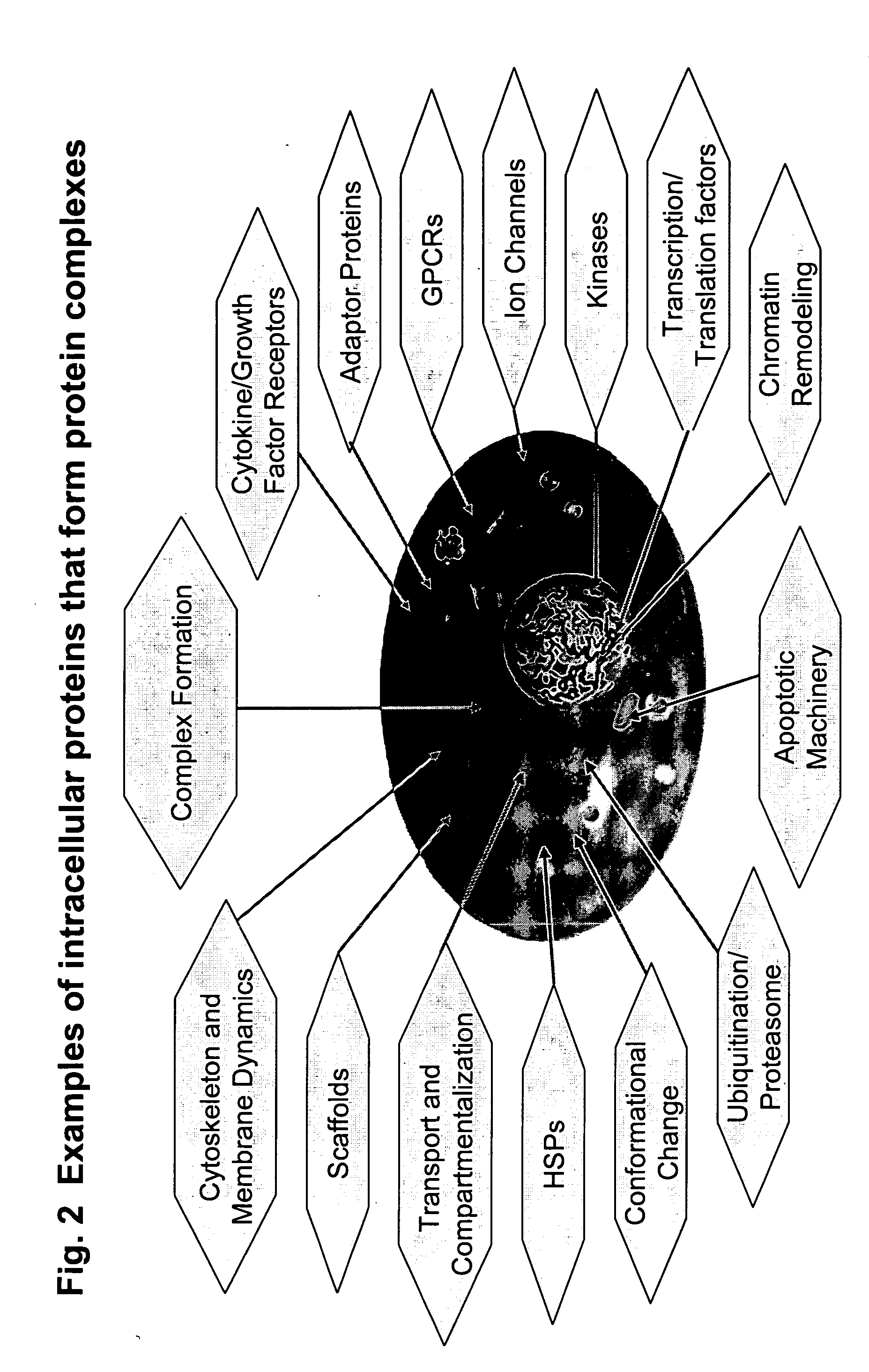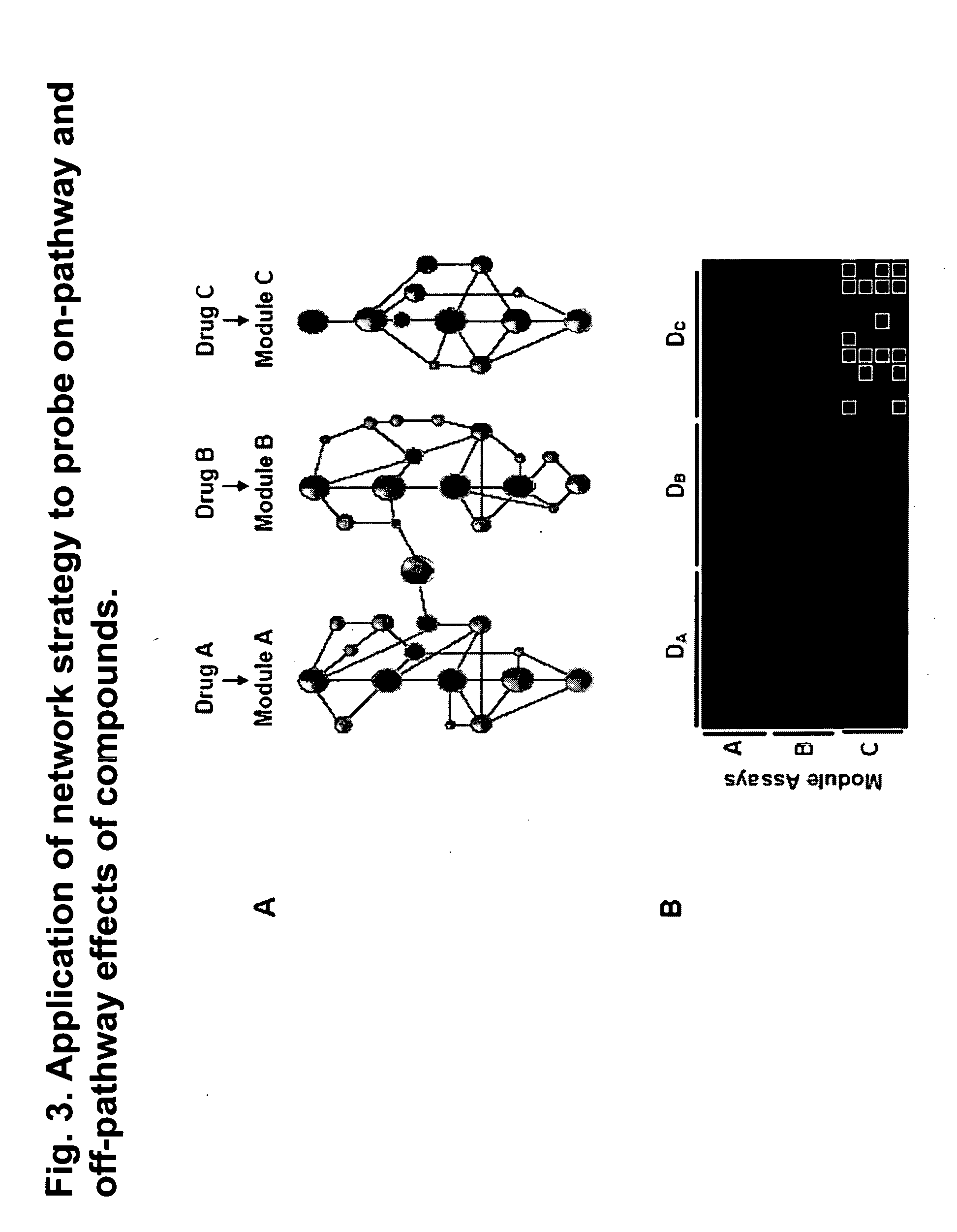Protein-protein interactions for pharmacological profiling
a technology of pharmacological profiling and protein-protein interactions, applied in the field of selective drugs, can solve the problems of not yielding the complete picture of a particular drug, expensive pre-clinical and clinical failures, and unsatisfactory drug pictur
- Summary
- Abstract
- Description
- Claims
- Application Information
AI Technical Summary
Benefits of technology
Problems solved by technology
Method used
Image
Examples
Embodiment Construction
Identifying On-Pathway and Off-Pathway Effects of Drugs (Pharmacological Profiling)
[0082] All drugs exert their effects by acting on proteins within living cells. The typical process of drug discovery involves selecting a protein target and establishing an in vitro assay for that target of interest. The target selection phase of discovery is followed by identification, screening or development of a chemical compound that exerts the desired effect on that target. This is accomplished either by high-throughput screening of a chemical or other compound library; by crystallization of the target and in silico or wet methods to design a compound that fits into a binding site on a target; or by a combination of these and similar methods. Regardless of the method used, there is always a known target, activity, or effect of the compound. However, in nearly every case, drugs and drug candidates exert unknown effects when they contact living cells. Such unknown effects are a result of lack of...
PUM
 Login to View More
Login to View More Abstract
Description
Claims
Application Information
 Login to View More
Login to View More - R&D
- Intellectual Property
- Life Sciences
- Materials
- Tech Scout
- Unparalleled Data Quality
- Higher Quality Content
- 60% Fewer Hallucinations
Browse by: Latest US Patents, China's latest patents, Technical Efficacy Thesaurus, Application Domain, Technology Topic, Popular Technical Reports.
© 2025 PatSnap. All rights reserved.Legal|Privacy policy|Modern Slavery Act Transparency Statement|Sitemap|About US| Contact US: help@patsnap.com



